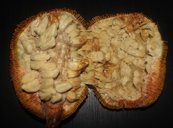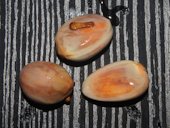| Marang - Artocarpus odoratissimus | |||||||||||
|---|---|---|---|---|---|---|---|---|---|---|---|
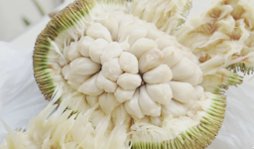 Fig. 1  Marang, terap, Artocarpus odoratissimus 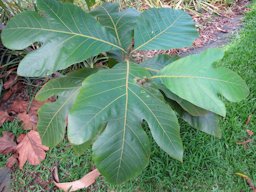 Fig. 2  A. odoratissimus (marang) leaves. Pali o Waipio, Maui, Hawai'i.  Fig. 3  Leaves. Pali o Waipio, Maui, Hawai'i.  Fig. 4  A. odoratissimus Blanco. East Malaysia, Sabah: Poring Hot Springs near Ranau. 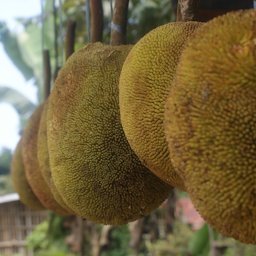 Fig. 5  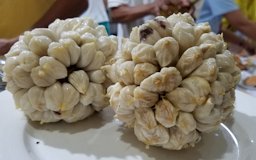 Fig. 6  Mirinda time. Break time in the Philippines. Marang. 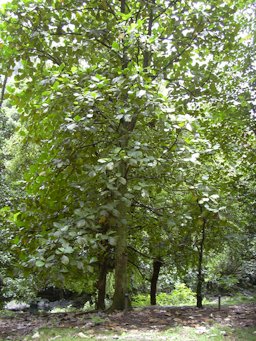 Fig. 11  A. odoratissimus (Marang) Habit. Keanae Arboretum, Maui, Hawai'i. 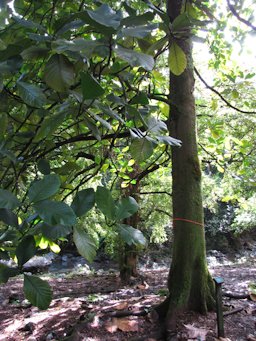 Fig. 12  Habit. Keanae Arboretum, Maui, Hawai'i. 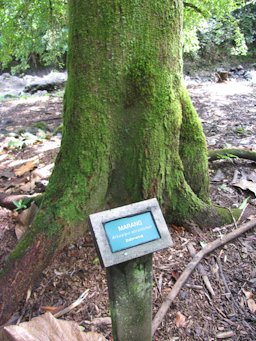 Fig. 13  Habit. Keanae Arboretum, Maui, Hawai'i. 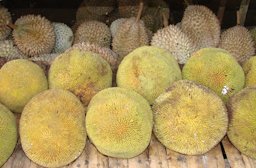 Fig. 14  Marang and durian delight, Phillipines 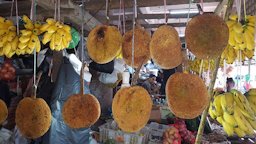 Fig. 15  Tarap fruits, A. odoratissimus. KK Central Market, Sabah, Malaysia. 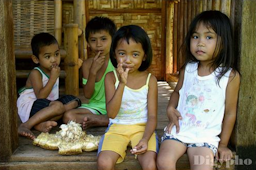 Fig. 16  Children eating marang fruit in the Phillipines |
Scientific
name Artocarpus odoratissimus Blanco Common names English: marang; Iban: pingan; Bidayuh: pi-ien; Kelabit: keiran; Malaysia: terap; Sulu: marang; Lanao: madang; Tagalog: loloi; Thailand: khanun sampalor; Filipino: marang; Swedish: tarap 1,2 Synonyms A. tarap Becc. and A. mutabillis Becc. 2 Relatives Breadfruit, A. altilis; cempedak, A. integer; jackfruit: A. heterophyllus; kwai muk, A. lingnanensis; fig, Ficus spp.; mulberry, Morus spp. Family Moraceae (mulberry family) Origin Southeast Asia USDA hardiness zones 10-12 Uses Food Height Up to 82 ft (25 m) tall 2 Crown Spreading canopy Trunk/bark/branches 15.7 in. (40 cm) diameter trunk; low buttress; bark grey to dark brown; sticky white latex; twigs with long yellow/red hair 2,5 Pruning requirement Limited to the removal of dead branches 6 Leaves Dark green; large 6.3-20 in. (16-50 cm) long; 4.3-11 in. (11-28 cm) wide; round at the stem; tip narrower 3 Flowers Monoecious: male and female flowers grow separately on the same tree; female flowers grow in inflorescences 3 Fruit Large; roundish oblong; studded with yellow spines; flesh juicy, aromatic; flesh clinging to core 2 Season Philippines: May-July; Mindanao: Aug.-Dec.; Malaysia: Oct.-Jan.; Australia: Feb. 3 Light requirement Full sun Soil tolerances Loamy or sandy clay 3 pH preference Sensitive towards changes in the soil acidity 3 Drought tolerance Grows best in regions with abundant and equally distributed rainfall 3 Cold tolerance Cannot tolerate cold temperatures under 44.6 °F (7 °C) 3 Plant spacing 40-46 ft (12-14 m) apart in the field 6 Roots Deep taproot 6 Invasive potential * None reported Pes/diseaset resistance No serious pests/diseases reported Known hazard None known Reading Material Artocarpus odoratissimus, PROSEA Foundation The Marang, Manual Of Tropical And Subtropical Fruits Origin A. odoratissimus belongs to the family of Moraceae and can be found mainly on Borneo Island especially Brunei, Kalimantan (Indonesia), Sabah, and Sarawak (Malaysia). However, the fruit is now cultivated in other southeast Asian countries such as Thailand and the Philippines (Mindoro, Mindanao, Basilan, and Sulu). Nowadays, it has also been introduced into Australia, Brazil and some other tropical countries. Today it has been cultivated in many areas for its edible fruit. 3 Description Khanun sampalor is rather similar to breadfruit (Artocarpus altilis Fosberg) in its tree shape, however, the leaves and fruit shapes are quite different. 4 Khanun sampalor is found growing naturally in Sarawak in secondary forests up to 1,000 m altitude on sandy clay soils. It is also found cultivated as well as growing wild in the Philippines. It is also found in partially shaded locations from sea level to 800 m elevation. 4 As one of the most highly praised fruits in the genus, it is puzzling why marang is not widely grown. Low yield and short shelf life offer only a partial explanation, since these features would not deter most home gardeners. 6 Flowers Inflorescences axillary, solitary; male and female flowers, small, 0.2 in. (0.5 mm) diameter, yellowish, on the same tree but in separate axillary inflorescence heads. Male heads solitary or in pairs, are ellipsoid to clavate and 1.6-4.3 x 0.8-2.4 in. (4-11 × 2-6 cm). Female heads solitary with pubescent peltate bracts mostly shed and simple styles exserted to 0.06 in. (1.5 mm). 5 The flower heads are borne on emerging shoots. 6 Fruit It is well known that the fruit is tasty, soft flavored and considered superior to both A. heterophyllus (jackfruit) and A. integer (cempedak). 3 A. odoratissimus is large with 6.3 in. (16 cm) length, 5 in. (13 cm) diameter and up to 5.5 pds (2.5 kg) in weight. It can be divided into various parts such as flesh, pulp, skin, and seed where the flesh is a dominant part of the fruit which represents 50%, 60% of the total weight while the pulp, skin and seed represent 40%, 50% of the total weight and normally they are discarded. 3 Once the fruit undergoes the ripening process, the outer rind turns from green to brownish-yellow and becomes soft. Additionally, the volatile compounds synthesized during the fruit ripening may produce a strong sweet aroma while the taste is provided by many nonvolatile compounds such as sugars. When the fruit is being opened, the oxidative browning (Fig. 6,7,8) might have occurred and thus it should be consumed within a few hours after opening as it deteriorates rapidly in taste whilst it oxidizes. 3
Pollination Marang secretes a nectar containing fructose to attract diverse nocturnal insects and is pollinated by them. 7 Harvesting Mature fruits are usually harvested by hand with the help of a curved knife attached to the end of a long bamboo pole. 4 The fruits are borne at the end of long flexible branches and ripe fruits are heavy, fragile and difficult to reach for harvest. 6 Propagation Khanun sampalor is propagated from seed. The seeds are extracted from ripe fruit, thoroughly cleaned with water and sown immediately on sandy loam soil as they lose their viability quickly. 4 Seeds germinate in about 4 weeks. Trees become reproductive at an age of 4-6 years. 6 Marang can be budded or grafted on gumihan (Artocarpus elasticus) and inarched with breadfruit (Artocarpus altilis (Parkinson) Fosberg). 6 Irrigation Regular weeding and irrigation during the first 2 or 3 dry seasons ensures good growth. 6 Pests/Diseases In Asia, no serious pests and diseases have been observed, apart from maggots of the oriental fruit fly (Dacus umbrosus) found in the fruits. 6 Food Uses The large fruit is esteemed for the sweet, juicy, aromatic perianths surrounding the seeds, which can be eaten fresh or used as an ingredient in cakes. The seeds are eaten roasted or boiled; boiled seeds (30 minutes in salty water) have a delicious nutty flavour. Young fruits are also cooked in coconut milk and eaten as a curried vegetable. 6 The flesh is commonly mixed with flour and egg batter and fried as tarap fritters, used to flavour ice-cream, and can be fermented to organic vinegar. 2 Nutritional Value Flesh contained 67.9-73.4g/100g moisture (wet basis), 0.6-0.8g/100g ash (wet basis), 12.0-25.2g/100g total carbohydrate (wet basis), 1.2-1.5 g/100g crude protein, 0.8-1.3g/100g crude fibre (wet basis), 334-379 kcal/100g energy content (dry basis) and 85-363mg/kg proline (wet basis). The seeds contain 31.0-55.0g/100g moisture (wet basis), 1.0-1.5g/100g ash (wet basis), 3.2-4.7g/100g crude fibre (wet basis), 5.1-6.6g/100g crude protein (wet basis), 10.1-28.1g/100g crude fat (dry basis), 488-497Kcal/100g energy content (dry basis), 1.2-2.3g/100g fresh weight of total carbohydrate and 255-476mg/ kg proline. 2 Medicinal Properties ** In traditional folkloric medicine, the Ibans in Sarawak have been reported to consume a decoction of the root for diarrhoea. Ash from the leaves is applied on scorpion stings and centipede bites. When added with a little coconut oil, the ash is used for scabies or kuris. 5 Other Edibles in the Artocarpus genus: Breadfruit, A. altilis Chempedak, A. integer Kwai Muk, A. hypargyraeus Jackfruit, A. heterophyllus Lakoocha, A. lacucha List of Growers and Vendors |
||||||||||
| Bibliography 1 "Taxon: Artocarpus odoratissimus Blanco." USDA, Agricultural Research Service, National Plant Germplasm System, Germplasm Resources Information Network (GRIN-Taxonomy), National Germplasm Resources Laboratory, Beltsville, Maryland, 2020, U.S. National Plant Germplasm System, npgsweb.ars-grin.gov/gringlobal/taxonomydetail.aspx?id=4334. Accessed 20 July 2020. 2 Tang, Y., et al. (2013). "Proximate analysis of Artocarpus odoratissimus (Tarap) in Brunei Darussalam." International Food Research Journal, 20, 409-415, 2013, Research Gate, www.researchgate.net/publication/277671669_Proximate_analysis_of_Artocarpus_odoratissimus_Tarap_in_Brunei_Darussalam. Accessed 20 July 2020. 3 Abu Bakar, Fazleen, et al. (Tarap, Artocarpus odoratissimus. Exotic Fruits Reference Guide, 2018, doi.org/10.1016/B978-0-12-803138-4.00041-1. Accessed 20 July 2020. 4 Subhadrabandhu, Suranant. "Under-Utilized Tropical Fruits of Thailand." Food And Agriculture Organization Of The United Nations, Regional Office For Asia And The Pacific Bangkok, Thailand, RAP Pub. 2001/26, Dec. 2001, FAO, www.fao.org/3/ab777e/ab777e00.htm#Contents. Accessed 20 July 2020. 5 Lim T. K. "Edible Medicinal And Non-Medicinal Plants: Volume 3, Fruits." EPDF, 2012, epdf.pub/volume-3-fruits.html. Accessed 20 July 2020. 6 dela Cruz Jr., F. S. "Artocarpus odoratissimus Blanco." Edible fruits and nuts, Plant Resources of South-East Asia No 2, Edited by Verheij, E. W. M. and Coronel, R. E., PROSEA Foundation, Bogor, Indonesia, record 1478, 1991, PROSEA, (CC BY-NC-SA 3.0), www.prota4u.org/prosea/view.aspx?id=1478. Accessed 20 July 2020. 7 The Encyclopedia of Fruit & Nuts. Edited by Jules Janick and Robert E. Paull, Cambridge, CABI, 2008. Video v1 "Marang Review (Terap, Artocarpus Odoratissimus)." Fruit Boss, 9 May 2019, (CC0), www.youtube.com/watch?v=EWBcJNyKiIo. Accessed 13 Dec. 2021. Photographs Fig. 1 "Marang Review (Terap, Artocarpus Odoratissimus)." Fruit Boss, 9 May 2019, (CC0), www.youtube.com/watch?v=EWBcJNyKiIo. Accessed 13 Dec. 2021. Fig. 2 Starr, Forest, and Kim. "Artocarpus odoratissimus (Marang) Leaves. Pali o Waipio, Maui, Hawai'i." Starr Environmental, 121108-0821, 8 Nov. 2012, (CC BY 4.0), www.starrenvironmental.com/images/image/?q=24565718104. Accessed 24 July 2020. Fig. 3 Starr, Forest, and Kim. "Artocarpus odoratissimus (Marang) Leaves. Pali o Waipio, Maui, Hawai'i." Starr Environmental, 121108-0822, 8 Nov. 2012, (CC BY 4.0), www.starrenvironmental.com/images/image/?q=24569568073. Accessed 24 July 2020. Fig. 4 Rodd, Tony. "Artocarpus odoratissimus Blanco. East Malaysia, Sabah: Poring Hot Springs near Ranau." Flickr, 4 Oct. 2004, (CC BY-NC-SA 2.0), www.flickr.com/photos/tony_rodd/3246391427/. Accessed 23 July 2020. Fig. 5 Sarmiento, James. "Marang." Flickr, 1 Oct. 2018, (CC BY 2.0), www.flickr.com/photos/jamessarmiento/30311452737. Accessed 23 July 2020. Fig. 6 Jim. "Mirinda time. Break time in the Philippines - marang." Flickr, 12 July 2015, (CC BY-NC-ND 2.0), Image cropped, www.flickr.com/photos/yumievriwan/28392520541. Accessed 23 July 2020. Fig. 7 "Artocarpus odoratissimus, Marang." Trade Winds Fruit, Plant Informational Database, www.tradewindsfruit.com/content/marang.htm. Accessed 21 July 2020. Fig. 8 Cerlin Ng. "Artocarpus odoratissimus." Flickr, 30 Nov. 2015, (CC BY-NC-SA 2.0), www.flickr.com/photos/89906643@N06/23969489742. Accessed 23 July 2020. Fig. 9 Cerlin Ng. "Artocarpus odoratissimus." Flickr, 30 Nov. 2015, (CC BY-NC-SA 2.0), www.flickr.com/photos/89906643@N06/23449418504. Accessed 23 July 2020. Fig. 10 Cerlin Ng. "Artocarpus odoratissimus." Flickr, 30 Nov. 2015, (CC BY-NC-SA 2.0), www.flickr.com/photos/89906643@N06/23449412754. Accessed 23 July 2020. Fig. 11 Starr, Forest, and Kim. "Artocarpus odoratissimus (Marang) Habit. Keanae Arboretum, Maui, Hawai'i." Starr Environmental, 030807-0064, 7 Aug. 2003, (CC BY 4.0), www.starrenvironmental.com/images/image/?q=24556718411. Accessed 24 July 2020. Fig. 12 Starr, Forest, and Kim. "Artocarpus odoratissimus (Marang) Habit. Keanae Arboretum, Maui, Hawai'i." Starr Environmental, 120216-2668, 16 Feb. 2012, (CC BY 4.0), www.starrenvironmental.com/images/image/?q=24508687613. Accessed 24 July 2020. Fig. 13 Starr, Forest, and Kim. "Artocarpus odoratissimus (Marang) Habit. Keanae Arboretum, Maui, Hawai'i." Starr Environmental, 120216-2671, 16 Feb. 2012, (CC BY 4.0), www.starrenvironmental.com/images/image/?q=24508696243. Accessed 24 July 2020. Fig. 14 Sumangil, Julia. "Marang and durian delight." Flickr, 23 May 2007, (CC BY-NC-ND 2.0), Image cropped, www.flickr.com/photos/julesnene/523588916. Accessed 23 July 2020. Fig. 15 Green Baron Pro. "Tarap Fruits, Artocarpus odoratissimus. KK Central Market, Sabah, Malaysia." Flickr, 13 Aug. 2016, (CC BY-NC 2.0), www.flickr.com/photos/gancw1/28920929696/. Accessed 23 July 2020. Fig. 16 Lewin, Paul David. "Children Eating Marang Fruit in the Phillipines." 10 July 2009, Foodista, www.foodista.com/food/RWX3DNZ4/marang. Accessed 23 July 2020. * UF/IFAS Assessment of Non-native Plants in Florida's Natural Areas ** Information provided is not intended to be used as a guide for treatment of medical conditions. Published 24 July 2020 LR. Last update 13 Dec. 2021 LR |
|||||||||||

